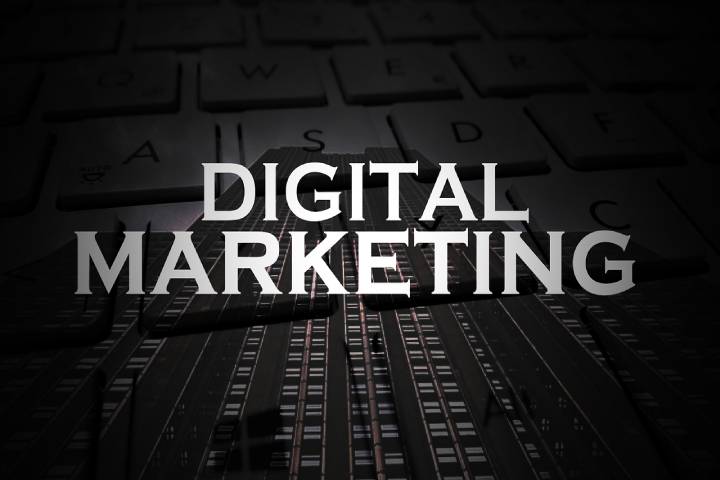Business
Top 10 Tips for Choosing the Right Business Energy Supplier
To help you make an informed decision, we’ve compiled our top 10 tips for choosing the right business energy supplier.

As a business owner in the UK, you’re likely well aware of the importance of choosing the right energy supplier. After all, your choice can have a significant impact on your bottom line and the overall success of your business. But with so many suppliers and options available, how do you know which one is the best fit for your needs? To help you make an informed decision, we’ve compiled our top 10 tips for choosing the right business energy supplier.
Choose the right energy supplier now! Click here for business energy quotes.
Table of Contents
1. Understand Your Energy Needs
Before you start comparing suppliers, it’s crucial to understand your business’s energy needs. This includes factors such as your average monthly consumption, peak demand periods, and any specific requirements you may have (e.g., green energy). Having a clear understanding of your energy needs will make it easier to find a supplier that can meet them.
2. Research Available Suppliers and Use Comparison Sites
Once you have a good grasp of your energy needs, it’s time to research the various suppliers available in the UK. You can start by visiting their websites and reading customer reviews to get a sense of their reputation and the quality of their services. Additionally, using comparison websites can help you quickly and efficiently compare prices and contract terms from different suppliers.
One such comparison site is Business Energy Comparison, which allows you to easily compare quotes from multiple business energy suppliers based on your specific requirements. By entering your business’s postcode and some basic information about your energy usage, you can receive tailored quotes from a range of suppliers in just a few minutes. This can save you valuable time and effort in your search for the right supplier.
3. Compare Prices
Price is undoubtedly a significant factor when choosing a business energy supplier. However, don’t be swayed by low prices alone. Make sure to compare the price per unit of energy (measured in kilowatt-hours or kWh) as well as any additional charges, such as standing charges or exit fees. It’s also important to consider the length of the contract and whether prices are fixed or variable.
4. Assess Contract Length and Flexibility
Contract length and flexibility are essential factors when choosing a business energy supplier. Shorter contracts (e.g., 12 months) may offer more flexibility, allowing you to switch suppliers more frequently if needed. On the other hand, longer contracts (e.g., 36 months) may provide price stability and protection against future price increases.
Ensure that the supplier you choose offers a contract length that suits your business’s needs and preferences. Additionally, look for suppliers that offer flexible contracts, such as those with no exit fees or early termination penalties.
5. Consider Green Energy Options in the UK
If environmental sustainability is a priority for your business, you may want to consider choosing a supplier that offers green energy options. Many suppliers in the UK now offer renewable energy plans, which can help you reduce your carbon footprint and demonstrate your commitment to sustainable practices. Here are some popular green energy options available in the UK and their benefits:
Solar Power
Solar power is generated by converting sunlight into electricity using photovoltaic (PV) panels. This form of renewable energy is not only emission-free, but it can also help businesses save on electricity costs, particularly during peak daylight hours.

Wind Power
Wind power is generated by harnessing the kinetic energy of wind using turbines. This renewable energy source is abundant in the UK and has the potential to significantly reduce greenhouse gas emissions. Additionally, wind power can provide a stable energy supply, as it’s less susceptible to fluctuations in fuel prices.
Hydroelectric Power
Hydroelectric power is generated by capturing the energy from flowing water, typically through the use of dams or run-of-river systems. This renewable energy source is highly efficient and contributes to a stable energy grid due to its predictable generation patterns.
Biomass Energy
Biomass energy is produced by burning organic materials, such as wood, agricultural waste, or purpose-grown crops. This form of renewable energy can help businesses reduce their reliance on fossil fuels while also supporting local economies and sustainable forestry practices.
Tidal and Wave Power
Tidal and wave power are forms of marine energy that harness the power of ocean tides and waves to generate electricity. Although these technologies are still in the early stages of development, they hold great potential for providing clean, consistent energy to coastal regions in the UK.
6. Evaluate Customer Service
Quality customer service is essential when dealing with any utility provider, including energy suppliers. Look for suppliers with a strong reputation for excellent customer service and support. This may include factors such as responsive communication channels (e.g., phone, email, live chat), helpful online resources, and dedicated account managers.
7. Check for Additional Services
Some business energy suppliers offer additional services that can help you manage your energy usage and costs more effectively. For example, some suppliers provide energy audits, efficiency advice, and smart meter installation. Additionally, suppliers may offer tools to help you track and monitor your energy usage in real-time. If these services are of interest to you, make sure to consider them when evaluating different suppliers.
8. Read the Fine Print
Before signing a contract with an energy supplier, it’s crucial to read the fine print and ensure you fully understand the terms and conditions. Pay close attention to details such as contract length, pricing structure, exit fees, and any additional charges. If you’re unsure about any aspect of the contract, don’t hesitate to ask the supplier for clarification.
9. Seek Recommendations from Other Businesses
One of the best ways to find a reliable business energy supplier is by seeking recommendations from other businesses in your industry or local area. Ask your colleagues, friends, or professional network about their experiences with different suppliers. This can provide valuable insights into the quality of service, pricing, and contract terms offered by various suppliers.
10. Don’t Be Afraid to Negotiate
Finally, don’t be afraid to negotiate with potential suppliers to get the best deal possible. Many suppliers are willing to offer discounts or special deals for businesses that commit to long-term contracts or have high energy consumption. Remember, it’s in the supplier’s best interest to win your business, so don’t hesitate to ask for better terms or pricing if you think it’s warranted.
In conclusion, choosing the right business energy supplier in the UK requires careful consideration of various factors, including price, contract length, customer service, and additional services. By following these top 10 tips, you can make an informed decision and select a supplier that meets your business’s unique energy needs.
Business
Tax Filing Advice: Self-employment Tax (IRS Form 1040)
In this post, we’ll show you how to fill out Form 1040 and offer some tips on how to minimize your tax obligations. Tax Filing Advice – Self-employment Tax – IRS Form 1040.

Filing your taxes can be challenging, especially if you are a freelancer. As a freelancer, you are required to pay self-employment tax, maintain track of your revenues and expenses, and submit projected tax payments throughout the year. You can complete an IRS Form 1040 with a little help and a quarterly tax calculator, despite the fact that it could appear challenging. In this post, we’ll show you how to fill out Form 1040 and offer some tips on how to minimize your tax obligations.
Table of Contents
1. Assemble Your Papers
Before you start filling out your Form 1040, you must gather all the necessary information and paperwork. Your W-2s, 1099s for any freelance work you did, receipts for any anticipated tax deductions, and any other financial records you might have are included in this. You must also include your Social Security number and the Social Security numbers of any dependents you wish to claim.
2. Verify Your Filing’s Status
Your file status affects your tax rate and the size of your standard deduction. Determine which filing status is appropriate for you based on your marital status, the number of dependents you have, and other factors.
3. Ascertain your income
Your total income for the tax year is what is referred to as your gross income. This includes all forms of income, including wages, salaries, tips, and revenue from side jobs. Add up your income for the tax year and gather all of your supporting papers. List all of your sources of income from contract work.
4. Remove Your Modifications
By deducting adjustments from your gross income, you can reduce your taxable income. They also pay your health insurance premiums, student loan interest, and IRA contributions if you work for yourself.
5. Choose Your Tax Savings
By taking some expenses out of your taxable income, you can reduce it. The two distinct types of tax deductions are standard and itemized. The standard deduction is an agreed-upon sum of money that is available to all tax filers. As itemized deductions, you are allowed to deduct some costs like state and local taxes, charity giving, and mortgage interest. It is better to select the tax deduction that would result in the greatest financial savings.
6. In Step Six, determine your taxable income.
After subtracting either your standard deduction or your itemized deduction from your AGI, your taxable income will be determined. According to federal law, this amount is your taxable income.
7. Choose Your Tax Credits
They are made up of education, earned income, and child tax credits. To reduce your tax obligation, find out which tax credits you are eligible for.
8. Find Out How Much Tax You Owe
Your overall tax liabilities, less any payments or credits, are referred to as your tax burden.

9. Verify Your Upcoming Tax Payments
If you are self-employed, you must make estimated tax payments throughout the year. Check your expected tax payments throughout the year to ensure you made the required amount to avoid underpayment penalties.
10. Finishing Schedule C
Schedule C, the relevant form, is used to report your self-employment earnings and expenses. To calculate your self-employment tax, which is based on your net self-employment income, use Schedule C. In addition to this, you will also owe regular income tax.
11. Add Up Your Credits and Payments
Add all of your year-end payments, such as estimated tax payments and any taxes you have withheld from your pay. If you qualify, take a deduction for any tax credits. Here, your overall payments and credits will be displayed.
12. Figure out whether you owe a refund or are due one.
You should evaluate your entire tax burden in relation to your total payments and credits. If your tax due is greater than the sum of your payments and credits, you will be obliged to pay extra tax.
13. Upload Your Return
When you’ve finished filling out Form 1040 and any necessary attachments, sign and date your return, and then send it to the relevant IRS address. Make sure to keep a copy of your return and any supporting documents for your keeping.
14. Tips on How to Cut Your Taxes as Much as Possible
Now that you know how, let’s speak about how to complete Form 1040 so that you may maximize your tax savings as a freelancer.
Using tax deductions is a smart move.
As a freelancer, you might be eligible to write off a range of expenses from your taxes, such as business travel, office supplies, and office equipment. Keep note of all your expenses throughout the year in order to maximize any relevant deductions.
Submit projected tax payments
As was previously stated, self-employed individuals are obligated to make projected tax payments throughout the year. This allows you to keep track of your tax obligations and prevent underpayment fines.
You May Want To Add
The ability to deduct more business expenses and a lower tax rate on self-employment income are just two of the additional tax benefits that incorporating your freelancing business may offer. Speak with a tax professional if you’re unsure if incorporation is the right option for you.
Employ tax-favored retirement accounts.
You may be able to reduce your taxable income and increase your tax savings by contributing to tax-advantaged retirement plans like an IRA or Solo 401(k). Use these accounts if you meet the requirements.
Conclusion
Although filling out a Form 1040 can be intimidating, with a little planning and assistance, it is actually rather easy. Even though you may face certain challenges as a freelancer when attempting to maximize your tax savings, there are a number of strategies you may employ to help minimize your tax burden. By taking advantage of tax deductions, paying expected taxes, considering incorporation, and using tax-advantaged retirement plans, you may keep more of your hard-earned money in your pocket.
-

 Instagram2 years ago
Instagram2 years agoBuy IG likes and buy organic Instagram followers: where to buy them and how?
-

 Instagram2 years ago
Instagram2 years ago100% Genuine Instagram Followers & Likes with Guaranteed Tool
-

 Business4 years ago
Business4 years ago7 Must Have Digital Marketing Tools For Your Small Businesses
-

 Instagram3 years ago
Instagram3 years agoInstagram Followers And Likes – Online Social Media Platform

















